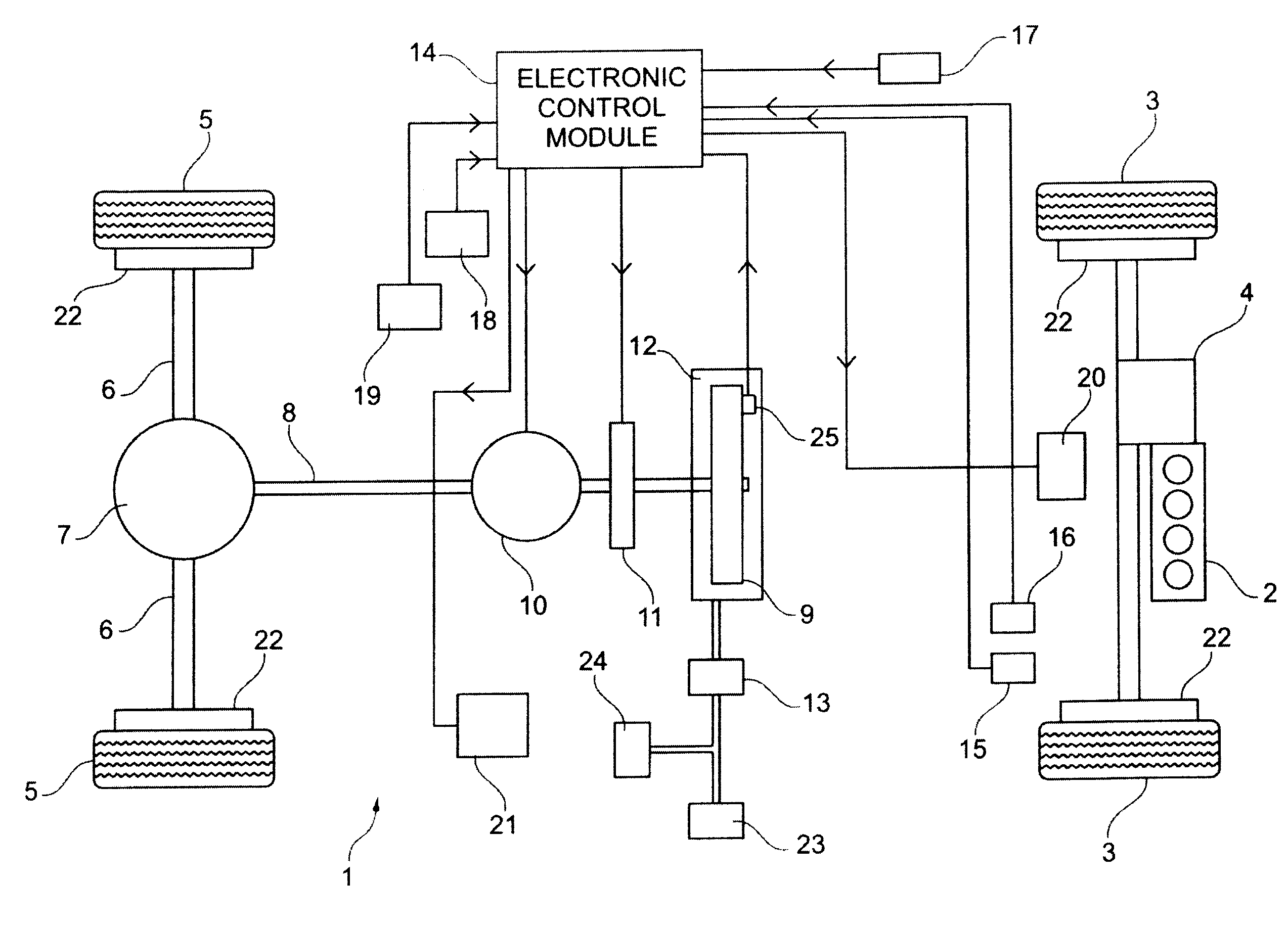Hybrid vehicle control apparatus and method
a hybrid vehicle and control apparatus technology, applied in vehicle position/course/altitude control, process and machine control, instruments, etc., can solve the problems of “drivability” problems, deterioration of vehicle performance as perceived by the driver, and downsized engines produce correspondingly lower levels of low speed torque compared with conventionally-sized engines. , to achieve the effect of reducing the overall fuel consumption, safe operation, and reducing the demands on the vacuum pump in the housing
- Summary
- Abstract
- Description
- Claims
- Application Information
AI Technical Summary
Benefits of technology
Problems solved by technology
Method used
Image
Examples
Embodiment Construction
[0025]With reference to the drawing, a vehicle 1 is equipped with an internal combustion engine 2 which provides motive power solely to a first set of wheels 3 through a gearbox and final drive assembly 4.
[0026]A second set of wheels 5 is connected via half shafts 6 and a final drive and differential unit 7 to a propshaft 8. The propshaft can drive and be driven by a flywheel 9. Interposed between the propshaft 8 and flywheel 9 is a transmission unit 10 having a continuously variable gear ratio. An electro hydraulic clutch 11 is provided for decoupling the CVT 10 (and consequently the wheels 5) to and from the flywheel 9 under certain operating conditions.
[0027]A pressurised supply of oil is supplied to the CVT 10 by an oil pump (not shown) which is driven by the propshaft 8.
[0028]The flywheel is contained within an evacuated housing 12 to which is connected a housing vacuum pump 13.
[0029]An electronic control module ECM 14 receives inputs from an accelerator pedal position sensor 1...
PUM
 Login to View More
Login to View More Abstract
Description
Claims
Application Information
 Login to View More
Login to View More - R&D
- Intellectual Property
- Life Sciences
- Materials
- Tech Scout
- Unparalleled Data Quality
- Higher Quality Content
- 60% Fewer Hallucinations
Browse by: Latest US Patents, China's latest patents, Technical Efficacy Thesaurus, Application Domain, Technology Topic, Popular Technical Reports.
© 2025 PatSnap. All rights reserved.Legal|Privacy policy|Modern Slavery Act Transparency Statement|Sitemap|About US| Contact US: help@patsnap.com


